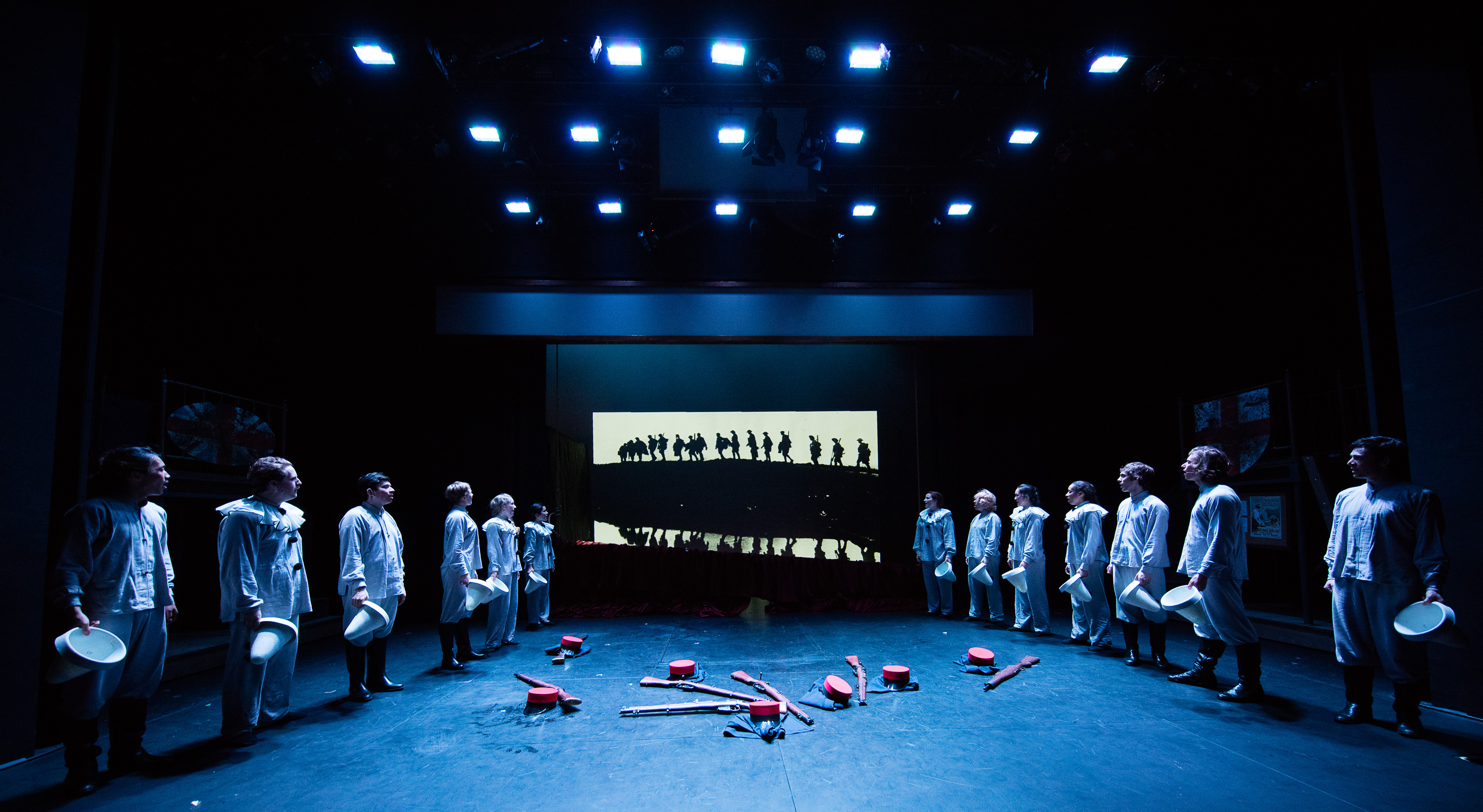Compared to the usual college theater shows, TAPS’ “Oh, What a Lovely War!” is masterfully produced. A big budget and special effects, however, are not all that it takes for a musical to be a hit. Between the 94-page program printed in color on high gloss paper and the repurposed LED light-wall used in Ram’s Head’s 2015 production of “Hairspray,” it’s clear TAPS knows how to amaze. Yet, despite the beautifully designed set and impressive WWI era costumes, the staging and student performances miss the mark. And although special effects are entertaining, the communication of the story itself is hindered by excessive stage direction and, at times, incomprehensible accents.
“Oh, What a Lovely War!” is a musical about WWI, written by Joan Littlewood in the 1960s as “propaganda for peace.” The musical tells the story of the First World War in chronological order, directly quoting letters written by soldiers and real war songs sung in the trenches.
To heighten this sense of historical accuracy, the program provides a timeline of the war, explaining the historical events which correspond to each scene. While helpful in a history course, these notes prove superfluous in the context of the performance. Instead of allowing the audience to enjoy “Oh, What a Lovely War!” for what it is, TAPS asks them to sit with open programs, trying in vain to follow along. As such, the 94-page program detracts from the stand-alone nature of the play, muddying the inherent drama with a desire for context. Also distracting? The aforementioned LED screens.
The technology used in “Oh, What a Lovely War!” is appropriate in some scenes but rather misplaced in others. The black and white photos from the battlefront serves as a powerful contrast to the musical’s funny ditties and one-liners – a constant reminder of the severity of the war. Overused LED signage, however, is just another diversion. Throughout the show, I found myself reading the words cast on these screens instead of listening to what was actually being said on-stage. This strange addition also seems to trivialize the projected war headlines, inadvertently likening them to scrolling movie titles.
In addition, auxiliary materials aside, “Oh, What a Lovely War!” is often confusing on its own. In the show’s opening, the cast enters dressed as Pierrot clowns, doing various bits of mime work. While there is much to see, the actors look visibly uncomfortable with the blocking and their movements lack cohesion.
Beyond the opening, there are additional moments of physicality through the play that seem powerful, yet undermine the continuation of the plot. In one scene wherein the whole of Europe gossips about the war, two men convincingly mime the act of riding on a train, holding onto an imaginary pole, jostled to and fro by the sway of the car. In the same scene, two girls mime jumping rope as a ballerina twirls across the stage. While interesting, such movements serve no clear purpose. Even if executed perfectly, these gestures place the emphasis on visual trivialities rather than the words or the story itself.
This is not to say that “Oh, What a Lovely War!” is devoid of successful artistry. As a whole, the cast does an incredible job dealing with the difficult representation of Germans, Austrians, Brits and Russians. The best example comes in a scene in which businessmen sit around the stage, shooting birds and talking about the economic gains of the war. Played by five women, each actress delivers a hysterical and distinct performance. The show also has moments of heartbreaking beauty, including Bella Wilcox’s (‘19) soulful lament of the pain of wartime and the pressure to be optimistic in the song “Keep the Home Fires Burning.”
Yet even the performances are undermined by a desire for historical realism. Inconsistent at best, the performer’s European accents frequently impede understanding. While a good British or German accent is an added bonus to any production that calls for them, in “Oh, What a Lovely War!” their use renders large portions of the show incomprehensible. In some scenes, a handful of words comes out garbled. In others, whole phrases are lost.
While dramaturgy is undoubtedly a necessary and crucial part of any production, it is something that is meant to be used by the actors and director, yet unseen by the audience beyond perhaps a one or two page address in the program. While the Undergraduate Performance Project (of which “Oh, What a Lovely War!” is the product) is meant to show the unification of scholarship and art, the production ultimately feels like an academic exercise rather than a fully enjoyable evening of theater.
Contact Olivia Wittting at owitting ‘at’ stanford.edu.
